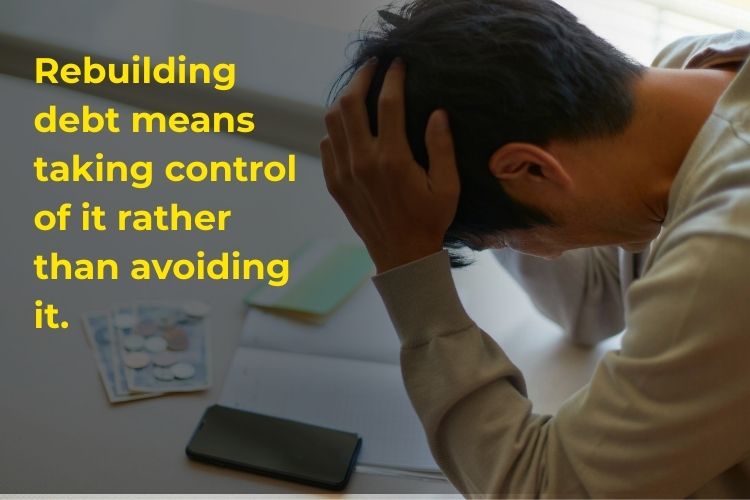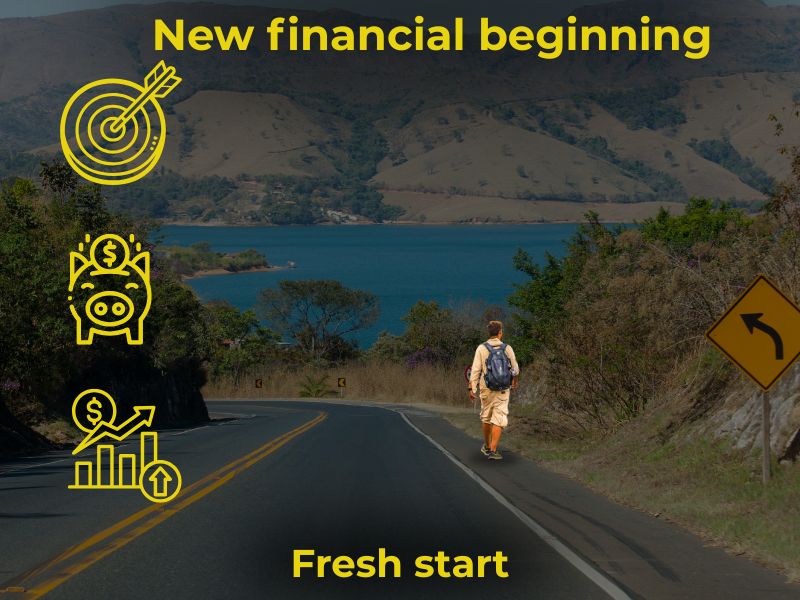Life doesn’t always go as planned. A job loss, medical emergency, divorce, or unexpected debt can turn your financial world upside down. These situations are stressful and often feel overwhelming — but they don’t have to define your future.
Rebuild Your Finances After a Setback. Instead, they can become turning points. By taking intentional steps, you can rebuild your finances after a setback, regain confidence, and create a more resilient financial foundation.
This guide will walk you through 10 practical steps to take control again and rebuild your finances after hardship.
Step 1: Accept What Happened — Without Shame
The first step is not financial, but emotional. Many people feel embarrassed or defeated after financial struggles. You may even think you’ve failed. But the truth is: setbacks happen to everyone.
Instead of judging yourself, shift your mindset. Look at your situation as a new chapter and an opportunity to grow.
Rebuild Your Finances After a Setback. Journal about what happened, what you learned, and what you want to change. Self-compassion is a powerful starting point when you rebuild finances after a setback.
Step 2: Assess the Damage Honestly
Once you’ve accepted your situation, it’s time to evaluate it clearly. You can’t rebuild what you don’t fully understand.
Make a financial snapshot:
- Total debt (credit cards, loans, medical bills)
- Missed payments or accounts in collections
- Current income and expenses
- Savings or assets remaining
Tools like spreadsheets, budgeting apps, or even pen and paper can help.
Tip: Facing the numbers might feel scary, but clarity is power. It gives you the roadmap to rebuild your finances step by step.
Step 3: Stabilize Your Situation
Before you think about saving or investing, focus on stability. Your immediate priority is covering essentials and reducing financial stress.
Rebuild Your Finances After a Setback. Here’s how to stabilize quickly:
- Secure income (temporary work, side hustles, unemployment benefits)
- Cut unnecessary expenses (subscriptions, dining out, extras)
- Contact creditors to negotiate or pause payments
- Focus on housing, food, transportation, and health first
Tip: If needed, explore local support programs or community resources. Stability is the foundation for recovery.
Step 4: Create a Bare-Bones Budget
A bare-bones budget covers only the essentials, stripping away non-essential spending until you’re stable again.
Your bare-bones budget should include:
- Rent or mortgage
- Utilities
- Groceries
- Insurance
- Transportation
- Minimum debt payments
Tip: Once you gain stability, you can gradually add back non-essentials. A lean budget helps you survive the storm and rebuild finances after a setback with discipline.
Step 5: Start a Mini Emergency Fund
Even in a setback, saving something — no matter how small — creates security. Aim for an initial $500–$1,000 mini emergency fund.
Ways to build it:
- Save $10–$25 a week consistently
- Sell unused items for quick cash
- Deposit windfalls like tax refunds or side income
Tip: Use a separate high-yield savings account so you’re not tempted to spend it. This safety net prevents small surprises from becoming bigger setbacks. Rebuild Your Finances After a Setback.
See more: How to Create a Simple and Effective Investment Plan (Step-by-Step Guide).
Step 6: Tackle Debt Strategically

Debt is often a major part of financial hardship. Rebuilding means taking control of it instead of avoiding it.
Two proven strategies:
- Debt Snowball: Pay off the smallest debt first for quick wins
- Debt Avalanche: Pay off the highest-interest debt first for long-term savings
Whichever you choose, make consistent payments and avoid new high-interest debt.
Tip: Call creditors to ask about hardship programs, lower interest rates, or payment plans. Many companies are more flexible than you think.
Step 7: Rebuild Credit Gradually
Setbacks often damage credit scores, but recovery is possible. Your credit will improve with consistent action.
Rebuild Your Finances After a Setback. Steps to rebuild:
- Pay bills on time (the biggest factor in your score)
- Keep balances low (under 30% utilization)
- Consider a secured credit card to rebuild history
- Check your credit reports annually for errors (free at AnnualCreditReport.com)
Tip: Don’t obsess over your score daily. Focus on healthy habits, and your credit will improve naturally over time. Rebuild Your Finances After a Setback.
Step 8: Increase Your Income
Cutting expenses helps, but boosting income accelerates recovery. Even an extra $200–$300 a month can make a huge difference.
Rebuild Your Finances After a Setback. Options to explore:
- Freelance or gig work (delivery apps, rideshare, online services)
- Part-time jobs
- Selling unused items online
- Upskilling with certifications or online courses
Tip: Focus on short-term income opportunities while building long-term earning power through education or career moves.
Step 9: Set New, Achievable Goals
Once stability returns, it’s time to look forward. Setting clear, achievable goals keeps you motivated.
Rebuild Your Finances After a Setback. Examples:
- Build a 3–6 month emergency fund
- Pay off credit cards by a specific date
- Save for a reliable car or housing down payment
- Restart retirement contributions
Tip: Use the SMART framework (Specific, Measurable, Achievable, Relevant, Time-bound) to make your goals realistic and trackable.
Step 10: Celebrate Progress — Not Perfection
Rebuilding finances after a setback takes time. It won’t happen overnight. That’s why celebrating small wins matters.
Rebuild Your Finances After a Setback. Examples of progress worth celebrating:
- Paying off your first debt
- Saving your first $500
- Making 6 months of on-time payments
- Landing a new job or side hustle
Tip: Reward yourself with free or low-cost celebrations. Momentum and confidence are your biggest assets.
See more: How to Review and Refresh Your Financial Plan 10 Ways Each Year for Lasting Success.
Final Thoughts: Your Comeback Story Starts Now
Rebuild Your Finances After a Setback. Financial setbacks can feel like rock bottom, but they also create opportunities for growth. By taking consistent steps — from stabilizing your budget to rebuilding credit and increasing income — you can rebuild your finances after a setback and come back stronger than before.
Remember: recovery is not about perfection, it’s about progress. Start where you are, use what you have, and trust that small, steady actions add up over time.
Your financial setback is not the end of the story — it’s the beginning of your comeback.
FAQ – How to Rebuild Your Finances After a Setback.
What should I do first after a financial setback?
Start by accepting what happened without shame. Emotional recovery is key to moving forward. Rebuild Your Finances After a Setback. Then assess your current financial situation honestly — including income, expenses, debts, and savings.
How can I stabilize my finances quickly?
Focus on securing income, cutting non-essential expenses, and prioritizing essentials like housing, food, and transportation. Contact creditors to negotiate payments and explore assistance programs if needed.
Why is a bare-bones budget important during recovery?
A minimalist budget helps you cover only what’s necessary while creating room to rebuild. It ensures you stay afloat without accumulating more debt during the early stages of recovery.
How do I start rebuilding my credit after a setback?
Pay bills on time, keep your credit utilization below 30%, and consider tools like secured credit cards. Regularly check your credit reports for errors to stay on track.
What long-term goals should I focus on after stabilizing?
Aim to build an emergency fund, pay down debt, restart retirement contributions, and set SMART goals for savings. Celebrate small milestones to stay motivated along the way.

